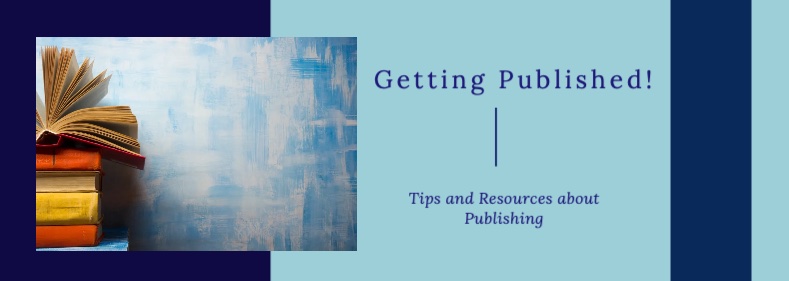By Lilian H. Hill
Journal editors are often frustrated by receiving manuscript submissions unrelated to their journal’s purpose and that do not meet the journal’s manuscript submission guidelines. It is disappointing to find that what at first glance appears to be a credible manuscript cannot be considered because it is unrelated to the journal’s purview and guidelines, does not meet style guidelines, is plagiarized, or greatly exceeds the length of articles the journal publishes. Editors recognize how disappointing it can be to have a manuscript rejected before it is sent to reviewers, yet failure to follow submission guidelines is a major reason why this occurs. Therefore, we provide some advice for authors wishing to publish their work.
Carefully Select a Journal
1. Be very careful to select journals that match your manuscript’s topic, purpose, methods, and conclusions.
a. One source of information about journals is Cabell’s Scholarly Analytics which you may be able to access through your university library databases. Other sources include your colleagues, as well as the journals cited in your reference list.
2. Once you have identified relevant journals, it is to your benefit to carefully study each journal’s Authors’ Submission Guidelines to determine whether your article is a good fit for the journal. This information is easily accessible because almost all journals now maintain a web presence.
3. Read articles published in past issues of the journal(s) to which you contemplate submitting your manuscript. Gaining a perspective on the articles that a journal accepts for publication provides guidance for authors about the focus of the journal and the type and caliber of articles accepted for publication.
4. It is not required to include a citation from your selected journal in your manuscript; however, if a pertinent citation exists, citing it reflects your understanding of the scope of the journal and your manuscript’s connection to previously published work.
Review Submission Guidelines
Credible journals provide guidance to authors regarding:
a. The purpose, subject area, emphasis, and scope of the journal.
b. Types of articles published and their length parameters.
c. Requirements regarding the use of style guidelines (such as APA, MLA, Chicago, Medical Style).
d. Current and past issues so that you can access previously published articles.
e. Ethical requirements, and guidance regarding avoiding plagiarism.
f. Impact factors, indexing, and distribution.
g. Editorial standards, board members/reviewers, and publisher.
Prepare and Submit Your Manuscript Adhering to the Style Guidelines
Carefully read the author’s guidelines to determine the:
1. Items to submit, including the abstract, keywords, manuscript, and reference list (aka, Bibliography).
a. If applicable, follow the directions to submit any tables, figures, or other images. Typically, these items must be “camera-ready,” meaning clear and of sufficient resolution to be ready for publication.
b. You may also upload a brief letter to the editors.
2. Required Style Guidelines (e.g., APA, MLA, Chicago, Medical Style). These provide guidance regarding document formatting, citation, and references.
a. Do not format your manuscript to look like articles that have been published in the journal; not only is this presumptuous, but it also raises questions about previous publication and plagiarism.
3. Length requirements for the types of articles a journal publishes.
4. Authorship information, including name, institution, and contact information for each author; authorship order; and identification of the contact author.
5. Sources of Funding, if applicable.
6. Conflict of Interest Statements.
Failure to follow the journal’s submission guidelines can result in your manuscript being rejected, no matter its content, quality, or importance.
Follow the Ethics of Manuscript Submission
1. Most academic journals use an anonymous peer-reviewed process (often referred to as double-blind peer review), meaning that authors and reviewers will not know each other’s identity. Therefore, be sure that you do not include any personally identifying information in the manuscript itself, including institution, program name, or author(s) name. If needed, this information will be reinstated during the final copy-editing process should your manuscript be accepted for publication.
2. It is expected that you submit your manuscript to only one journal at a time.
3. Do not submit previously published work.
a. If your work is based on a published conference proceedings article, your manuscript submission must be sufficiently different to merit additional publication. You must cite the proceedings in the new manuscript.
b. If the work you are submitting is based on a dissertation, you must also cite the dissertation.
4. Journal editors and reviewers are not intended to serve as copy editors. Be careful to submit work that is grammatically correct and factually correct and ensure that your references and citations match. If a manuscript has many errors, it will be rejected and returned to the author.
5. Respond graciously to reviewer and editor responses, even if you disagree with their conclusions.
a. Typically, your manuscript can be improved by following the recommendations of reviewers and editors.
b. If you feel that something you submitted was misunderstood or misinterpreted, or if the reviewer recommendations contradict each other, it is allowable to communicate with the editors to clarify your meaning.
Following these guidelines will increase your chances of successful academic journal publications.





No comments:
Post a Comment
Thanks for your comment! It will appear once approved.